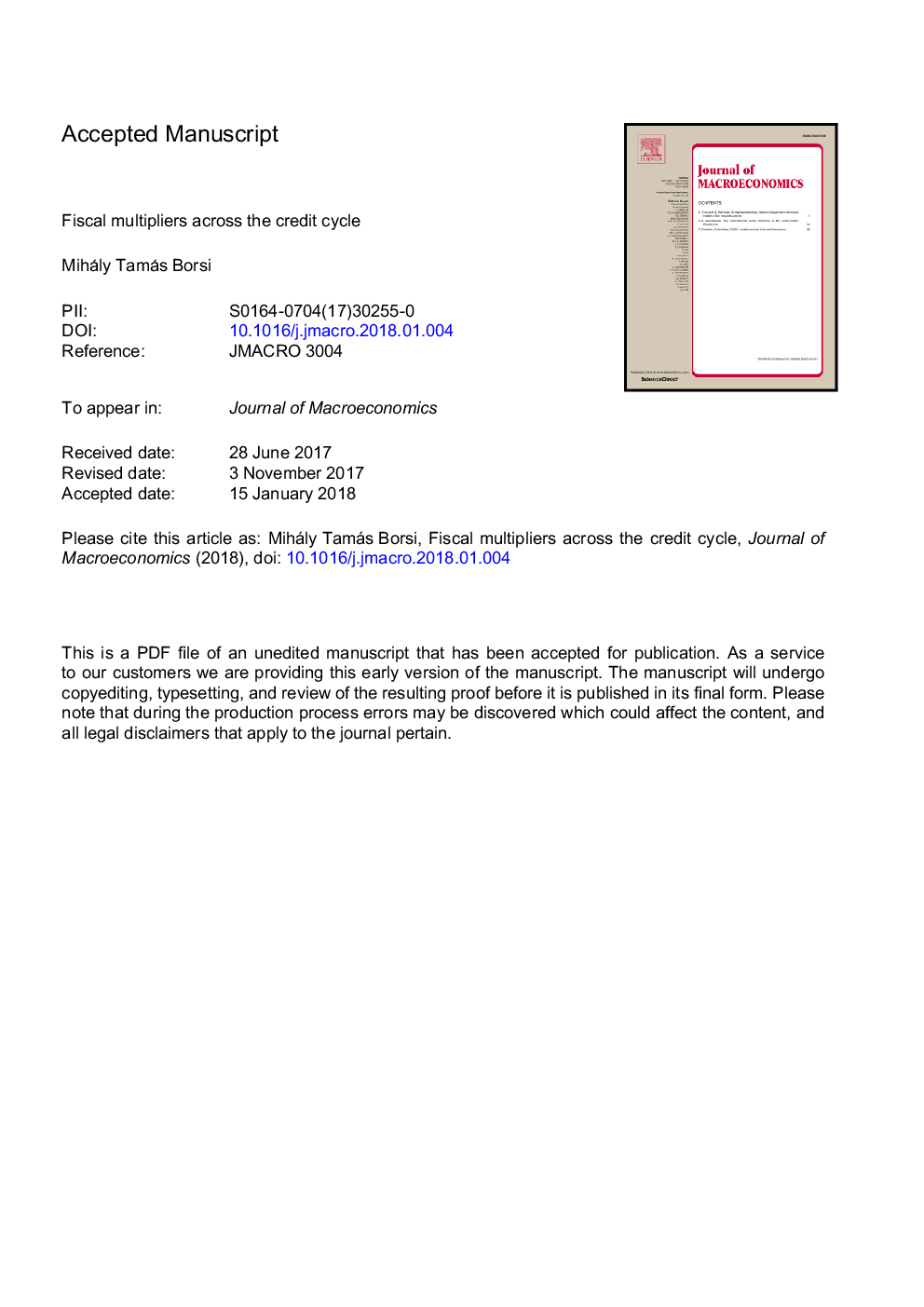| Article ID | Journal | Published Year | Pages | File Type |
|---|---|---|---|---|
| 7366757 | Journal of Macroeconomics | 2018 | 44 Pages |
Abstract
This paper studies the differences between fiscal multipliers in OECD economies across the credit cycle. Impulse responses are obtained using a state-dependent model with direct projections, in which multipliers depend on the state of credit markets. Identification of the effects of fiscal stimulus and austerity measures is achieved by distinguishing between unanticipated increases and decreases in government spending. The empirical results imply that the financial environment matters. Expansionary fiscal policies are associated with large multipliers during credit bust episodes, and spending increases likewise foster economic growth in periods of rapid credit expansion, albeit to a lesser extent. In contrast, the output effect of contractionary fiscal policies is never statistically different from zero. Regime-specific multipliers of the individual components of GDP and the unemployment rate suggest that reductions in public expenditure should help constrain the economy during unsustainable credit booms, whereas spending increases in financial recessions should facilitate the repair of private sector balance sheets in order to revive market confidence and boost economic recovery.
Related Topics
Social Sciences and Humanities
Economics, Econometrics and Finance
Economics and Econometrics
Authors
Mihály Tamás Borsi,
